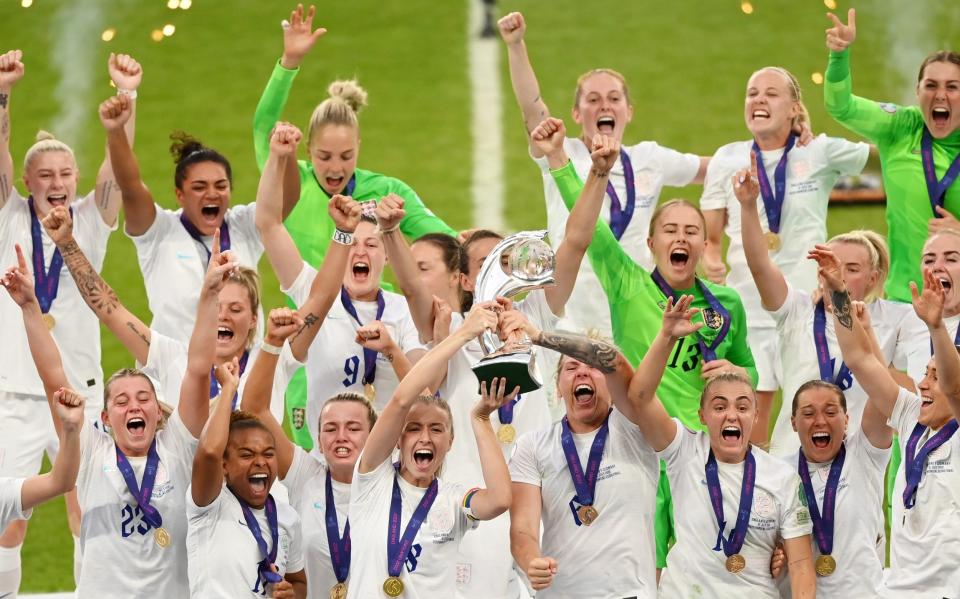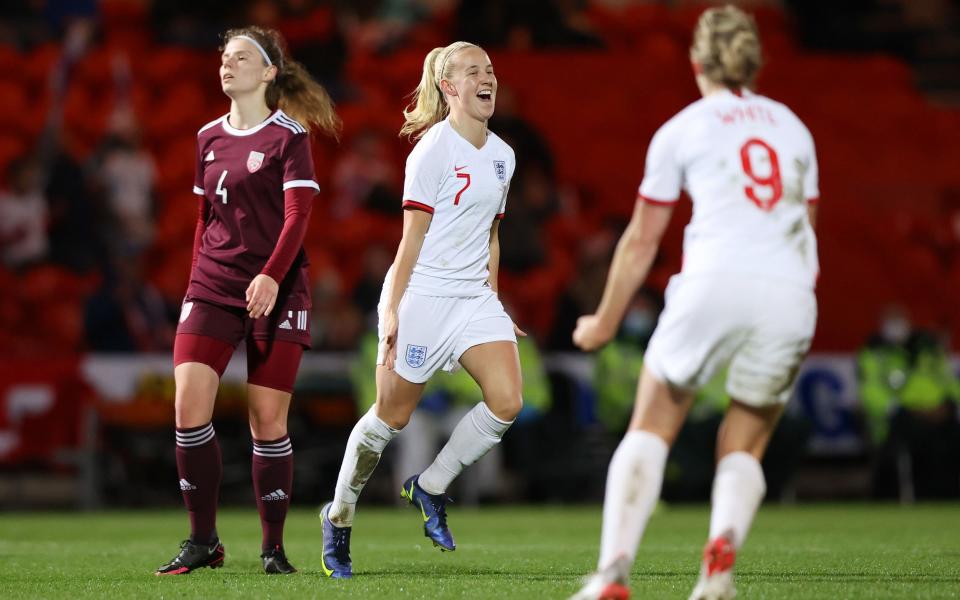Women's Nations League to be launched for the first time next year

Uefa has announced the launch of a new Nations League competition for women’s international football and a radically-revamped qualifying format for major tournaments from autumn 2023 onwards, but the announcement comes before a new global calendar for the women's game has been agreed and faces a backlash from major leagues and clubs concerned about extra international fixtures.
Europe's governing body has hailed their new format as "interconnected, dynamic and meritocratic", enabling countries to face more matches against opponents of a similar quality, while still keeping open a possible pathway for even the lowest-ranked teams to qualify for a major tournament.
The new system will divide the European women's nations into three "tiers" based on performance, ensuring that the fully-professional, top-ranked sides will no longer be pitted against amateur sides, bringing an end to the frequent mis-matches seen in the outgoing format. For example, England scored 80 goals in their 10 qualifying fixtures for next year's Women's World Cup, without conceding a single goal, and reached double figures in half of those games.
Instead, women's national teams will now compete in a Nations League that looks almost identical to the format used for the men's Nations League, which was founded in 2018.
Many in the game will welcome the opportunity to see more evenly-fought matches of a more competitive nature, but the timing of Uefa's announcement is not without controversy, because Fifa’s latest proposals for the 2024-27 women's international calendar are understood to still be at the consultation stage and have not yet been signed off.
How will the new Nations League and women's qualifying format work?
The new format consists of two phases - a Nations League followed by European qualifiers - but the two are hugely inter-connected. Taking the run-up to Women's Euro 2025 as the upcoming example, the Nations League will run from autumn 2023 to spring 2024, and then the European qualifiers will take place from spring 2024 to autumn 2024.
In the Nations League, teams will be split into three leagues depending on their current rankings, and then each league will be drawn into four groups of four. Within those groups, each team will play each other team home & away, before the winners compete in a finals tournament, much like the men's version of the Nations League. Additionally, there will also be promotion and relegation play-offs between the tiers.
In the example draw produced by Uefa to illustrate the competition, England (a top seed) would find themselves in a Nations League group with Denmark, Italy and Portugal.
And crucially for the Olympic women's football competition - in which women's football teams field their strongest, senior sides, rather than in the men's Olympic football competition where teams are restricted to age limits - the Nations League process will also act as the qualifying process for the Olympics. The finalists, together with 2024 Olympic hosts France, will qualify for the Games in Paris. Previously, Europe's representatives at the Olympics had been chosen based on the best-performing sides at the World Cup.
Then in 2024, once the Nations League cycle has concluded, a fairly similar, three-tiered format will be used for European qualifiers. As with the Nations League phase, teams will compete in (newly-drawn) groups of typically four teams, with the same process of home & away matches against each other team in the group.
At the end of those matches, the top two teams in each 'League A' group, in the top league, would automatically qualify for Euro 2025. The third and fourth-placed teams in those groups, plus an extensive set of teams from League B and the top sides in League C, would all enter a play-off competition, to determine the remaining qualification spots.
Goodbye to farcial 20-0 wins, but fears of player-burnout will increase
Many in the game will welcome the move towards more evenly-fought matches, bringing an end to the frankly farcical fixtures seen frequently in recent qualifying campaigns, the highest-profile example of which was England hammering Latvia 20-0 last year.
And Uefa have also found a way to maintain a level of fairness in the sense that every nation - regardless of whether they are in the top tier or the bottom tier of the new leagues - still technically has a chance of qualifying for a Euros or a World Cup, removing any fears that a multi-tiered system would give a team like Latvia no pathway to major tournaments even if they did make drastic improvements on the pitch.
The Nations League matches will likely be a better spectacle for fans, a more worthwhile sporting contest for players and coaches on a technical level, and may prove to be more appealing to broadcasters and sponsors. However, the new system has other downsides.
The most significant of those is the increase in the number of matches, which will raise concerns about the rising risk of player burnout, and raises questions about exactly where all of these matches will fit into the calendar.

Uefa's new format sees nations play up to 18 competitive Uefa games between autumn 2023 and the start of Euro 2025 - up to eight durings the Nations League phase and up to 10 during the European qualifying stage. In contrast, over an identical-length period between autumn 2021 and the start of the 2023 World Cup, most Uefa teams will have played only competitive Uefa matches or 10 or fewer, and only one country - Portugal, because of their involvement in February's intercontinental play-off) - will have played more than 12. Therefore that represents a major increase in the number of fixtures.
The announcement comes despite Fifa's proposal for the calendar from 2024 onwards still not having gone past the consultation stage, and Uefa's news release on Thursday is understood to have caught a number of footballing bodies around the world by surprise, as confirmation of the Nations League plans had not been expected yet.
Sources at a host of leading clubs around Europe have already expressed concern to Telegraph Sport about the additional number of international matches for their players, and it is understood several of Europe's top leagues had opposed Uefa's plans.
Many will welcome the improved sporting spectacle of the three-tiered system - and indeed, this author had called for such a tiered system on multiple occasions but it is the concept of adding the European qualifying process on top of a new Nations League process that will cause the controversy because of the large rise in fixtures. Exactly why the two processes could not have been merged - with the Nations League acting as the qualifying mechanism for the Euros, rather than almost doubling the number of matches - will be one of the key questions facing Uefa.
Even as recently as this week, Arsenal's Netherlands star Vivianne Miedema was being given a rest, with her club and country both agreeing she needed a breather as she was at risk of burnout. Yet the strain on players' schedules looks set to increase, and the political battles behind-the-scenes between Fifa, Uefa, leagues, clubs and player unions are no doubt set to continue.

 Yahoo Sport
Yahoo Sport 




































































